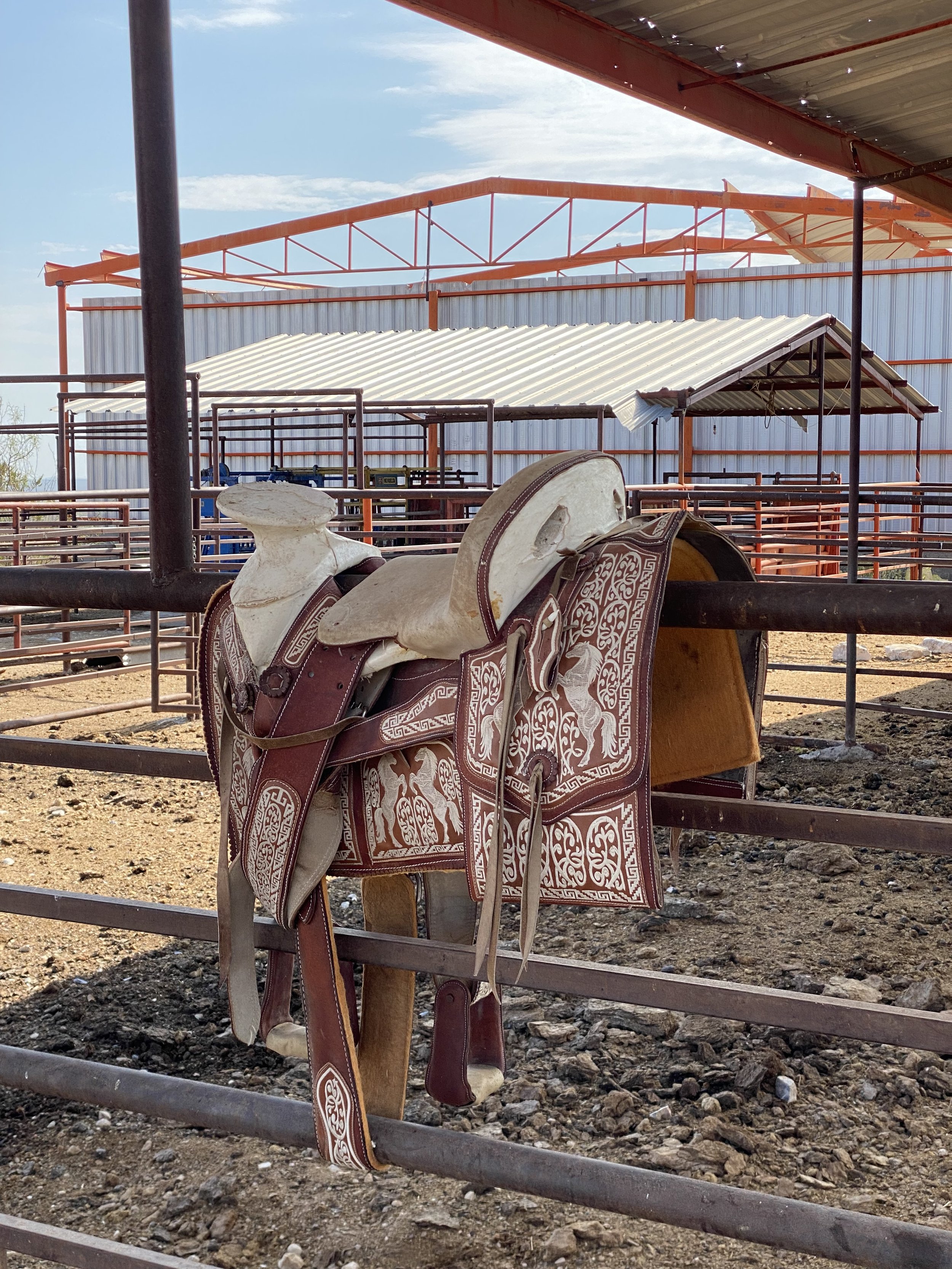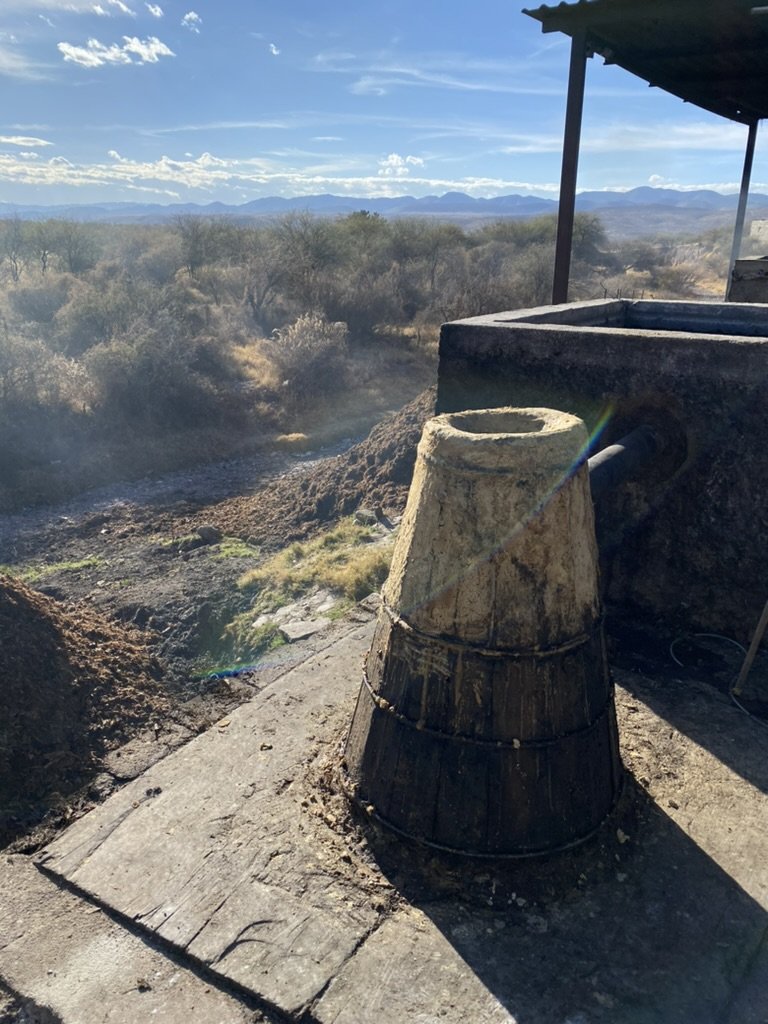lamparillo - zona del silencio
Batch: D-LAMP-02
Release date: April 2024
Back in 2022 we released batch one of ‘Lamparillo - Zona del Silencio’ (D-GRQ-01) - the first maguey Lamparillo (Agave Asperrima) bottled for the UK market. It was a smash hit of fresh green jalapeño flavoured deliciousness, with 100 litres selling out quickly.
In April 2024 we’re very pleased to present batch two, D-LAMP-02.
This bottling represents a deepening partnership with developing project Mezcal Ultramundo, owners and guardians of Rancho Pelayo in the Mapimí Silent Zone of northern Durango, from where the rare Lamparillo plants used in both of these batches was exclusively harvested.
rancho Pelayo & Ultramundo
〰️
rancho Pelayo & Ultramundo 〰️
The Mapimí Silent Zone (Zona del Silencio) is a patch of desert in the north of Durango, close to the border with Coahuila, that overlaps with the Mapimí Biosphere Reserve.
The silent zone is legendary for being… you guessed it… silent. Urban legend has it that no radio or other signals can be received here, and there are stories of plane crashes due to failed instruments as well as UFO sightings. Nopales even grow purple rather than green!
Having now stayed a couple of times at Rancho Pelayo we can testify to the silence… and lack of phone signal. The place is vast and feels incredibly remote.
It’s here that the family behind Ultramundo work the 24,000 acre Rancho Pelayo, which is covered in wild maguey Lamparillo (A.Asperrima) and Sotol.
The ranch was originally intended for raising cattle, which of course comes with associated emissions. But the really exciting thing to us about this project and partnership is the change of use of the land, and the regenerative practice built into the model.
Wet season Gobernadora clinging to life in the dying soil.
While some of the ranch has maguey Lamparillo growing plentifully, earth in other parts has already lost all of its nutrients and usefulness. The last remaining plant the soil can sustain in these areas is the drought hardy ‘Gobernadora’, or Creosote Bush. Once that’s gone there will be nothing left but sand dunes.
Dry season Creosote Bush
In an attempt to rejuvenate the soil, Ultramundo is harvesting the hijuelos (baby agave) as well as cultivating thousands of plants from collected seeds, and then distributing them around the dying areas of the ranch.
Agave cultivation from seed
Hijuelos transplant
Transplanted agave amongst the Gobernadora and dry desert.
The Ultramundo project plans to leave a minimum of 20% of their mature agave to go to seed, which should ensure an ongoing supply of wild and semi-cultivated maguey Lamparillo for future mezcal, while also allowing the natural proliferation of the other endemic plants and wildlife that live in and around the ranch.
Hawk perching on Lamparillo quiote in Rancho Pelayo
Wild Jabalí roam rancho Pelayo
Purple nopales
A small number of cattle also remain on the land as useful fertilisers and natures experts at cutting the quiote of the agave so it can be left as capòn in the field. The long-term plan is to re-train the remaining cowboys as Mezcalero's .
making the mezcal
〰️
making the mezcal 〰️
Wild maguey Lamparillo is estimated to take 15-20 years to mature in this arid desert environment. The leaves have a rough sandpaper like texture and a light greyish-green colour with faint striping or marbling that you also sometimes see on agave Marmorata (Tepextate, Pizorra).
Each mature agave that’s used for mezcal is left capon (flower stalk cut) in the desert for 3-10 months before being harvested and carried out of the maze-like desert by donkey.
For this batch they were then transported by truck to the vinata of Juan Manuel Perez in Nombre de Dios.
Lamparillo piñas arriving for the roast in Nombre de Dios
Capón agave waiting to be loaded on the volcanic rocks
Half loaded
To make this 100 litres, about 2,400kg of raw agave were required. At an average 20kg per piña, that’s 120 wild Mapimí maguey Lamparillo (Agave Asperrima)… yielding less than one litre of finished mezcal per plant.
The roast took three days, after which the plants were milled entirely by axe.
Traditional Durango style fermentation took four days (two before adding water, and two with water added) in ‘tomb’ style, sabino wood lined, in-earth wells.
Checking the ferment
The Durango style alembic still has a copper boiling pot with this tapered Dr-Who-Dalek-like filipino style wooden condensing chamber on top. Unlike a filipino still proper, there is no in-still capture. Rather the vapor is forced out of a hole in the top wooden chamber into a serpentine condensing coil, submerged in water.
During distillation a kind of agave syrup mud is used to seal any gaps in the top of the wooden condensing chamber. It’s a fascinating hybrid set-up that seems to merge styles from other regions of Mexico… although we couldn’t tell you which came first.
The eagle eyed will notice that our first and second batches of Lamparillo were distilled at different vinatas by different Mezcalero's. The key link between the batches is of course the rare maguey Lamparillo grown and harvested exclusively from Rancho Pelayo.
The Ultramundo project is constructing its own vinata at the source of the agave, on Rancho Pelayo. Having visited in both January 2022 and October 2023 we’re pleased to report that the build is very much underway.
El Viejo still resting in cattle water tank
Sergio (Jefe at Ultramundo)
The Rancho Pelayo horno
The oven is ready to go, ‘los viejitos’, (the old men) wooden condensing chambers of the stills are on site, resting in the cattle water baths until the distillery is ready for them.
Hopefully our batch three might be one of the first to run off the stills at the new desert distillery.
Gracias Juan & Ultramundo
Tasting notes:
Nose: Spicy in the nostrils with huge flavour of fresh green Mexican jalapeño peppers. It’s a really savoury and rich aroma that makes you think you’re about to eat something wonderful.
Palate: First sip is as bold as the nose, but with more vegetal and herbaceous tones in play. Barely any smoke. Hints of wild oregano from this desert wilderness creep into the mid-palate along with citrus tones.
Finish: Warming jalapeño lingers into a pleasing finish that’s the sweetest part of the flavour ride. What a treat.
Grab a bottle for your collection while stocks last:
Continue your agave spirits journey via the Mezcal Appreciation Society:









































